December 4, 2023
A year ago, I traveled to Gras, a small village in the Ardèche region of France, to study the acoustics of a 13th century chapel. [I arrived with three researchers: Bénédicte Bertholon, an archaeologist, Laurent Philippon, an acoustician, and Ugo Robert, a graduate student.] To reach the chapel, we drove beyond the town’s walls, into the outlying hills incised with limestone and blanketed in wild thyme.

27 October 2022
Gras, France
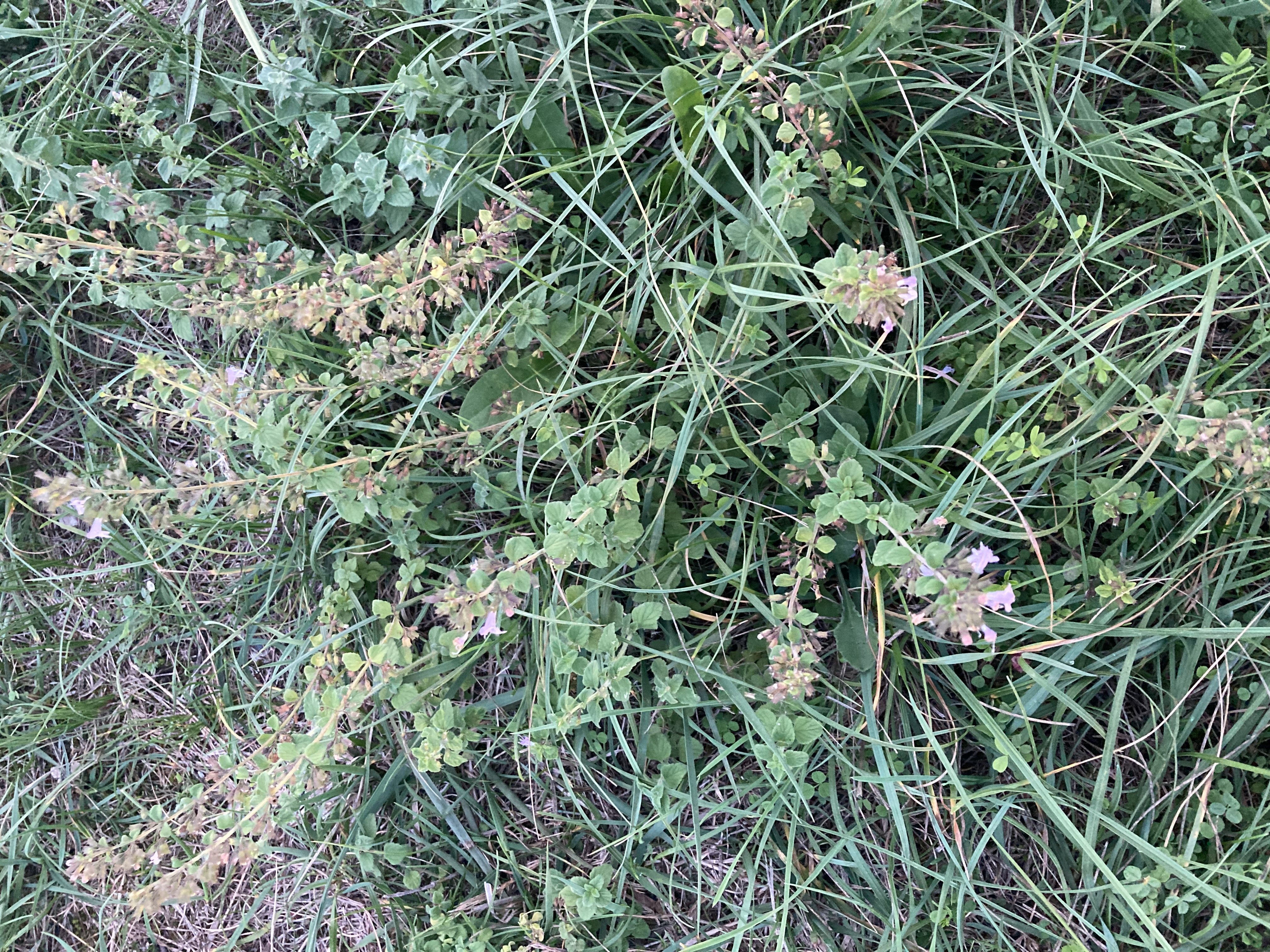
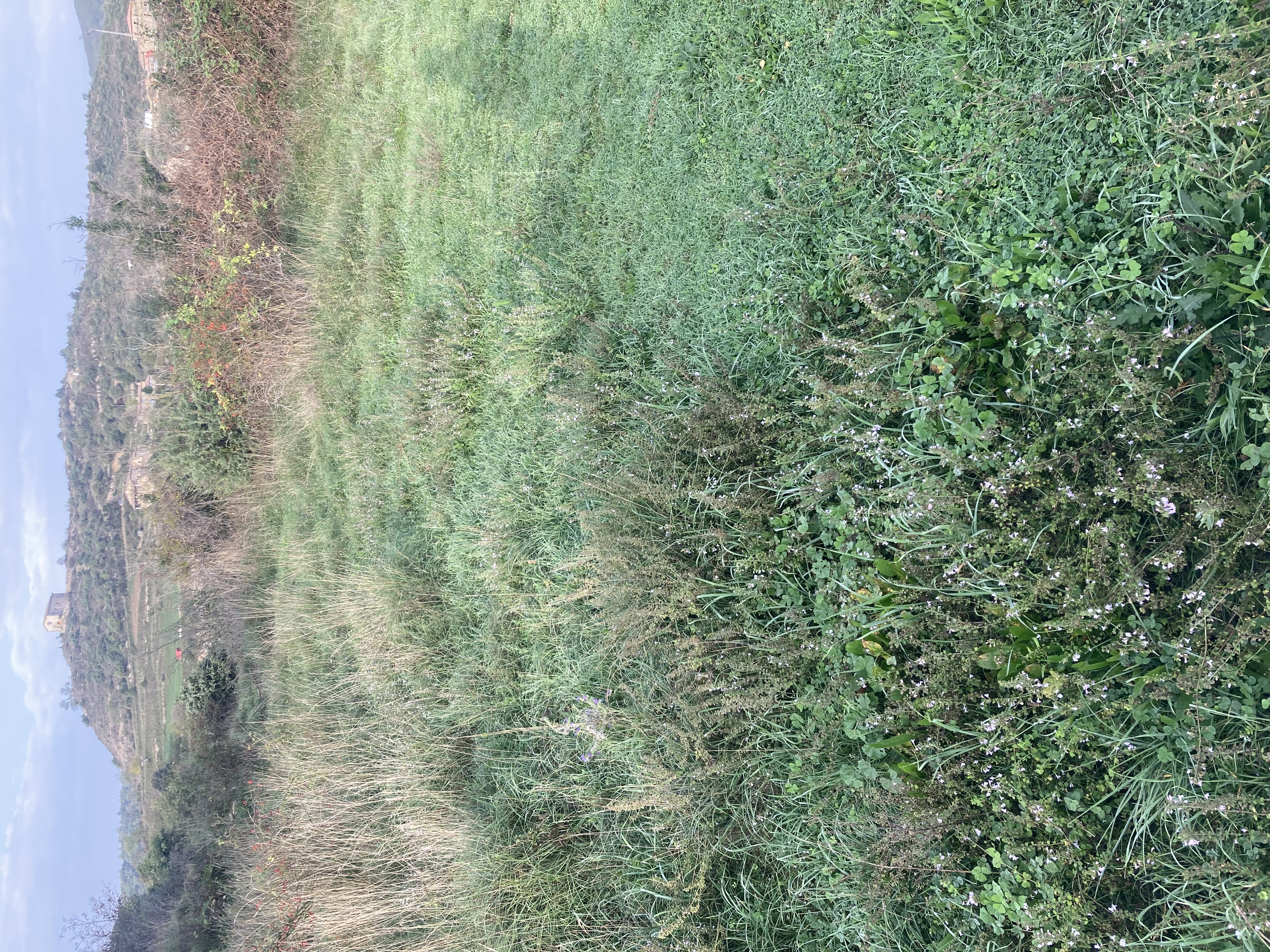
[*Saint Blaise was martyred in a peculiar fashion: he was combed to death. Metal bristled tools used to untangle the wool of sheep were used to pierce his skin. Consequently, Saint Blaise became the patron saint of shepherds and wool workers. From Chapel Saint Blaise, the bells of sheep can be heard rebounding across the valley of Gras.]
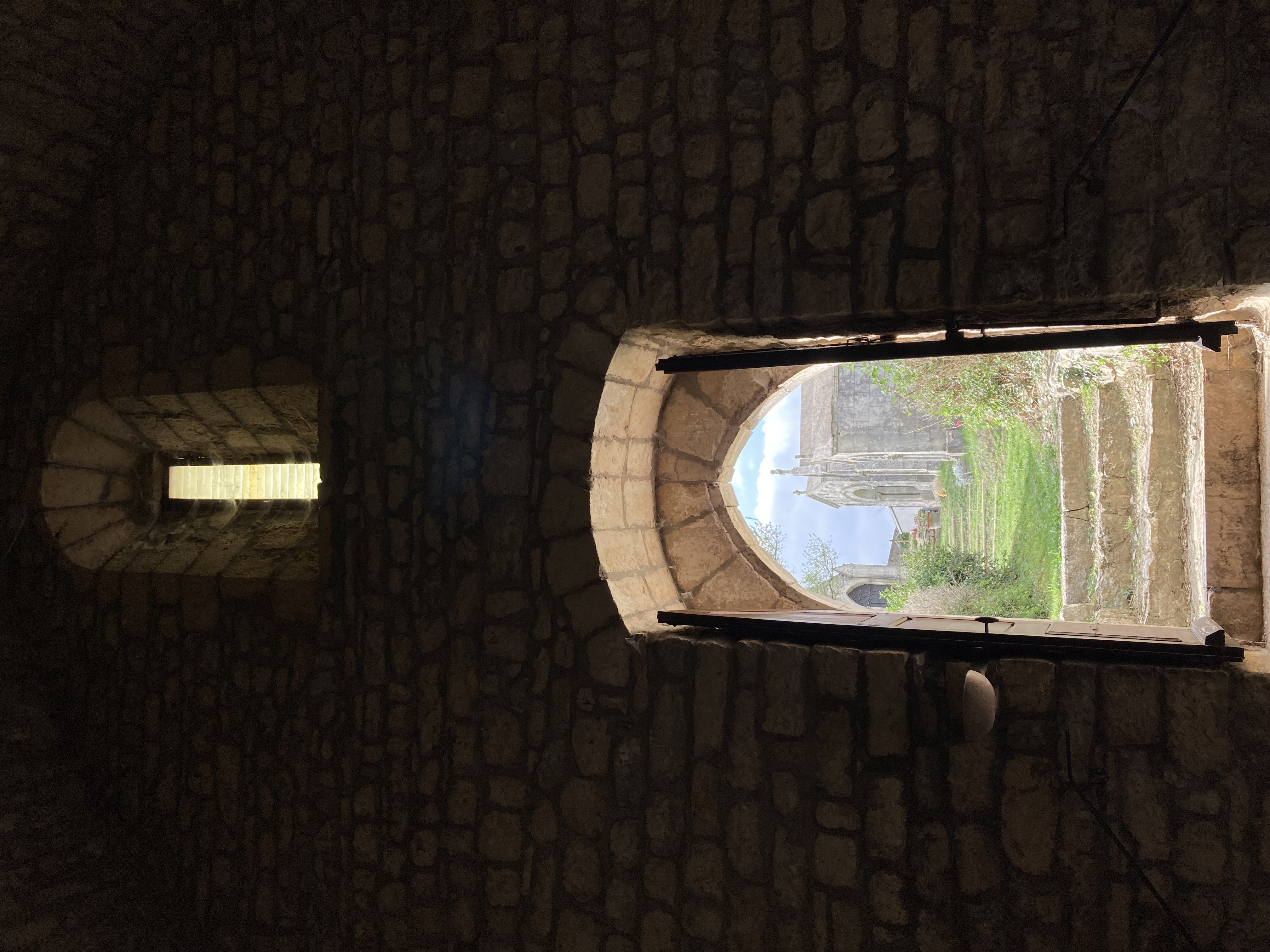
Singing must have been important in Chapelle Saint Blaise because inside is a very elaborate acoustic treatment.
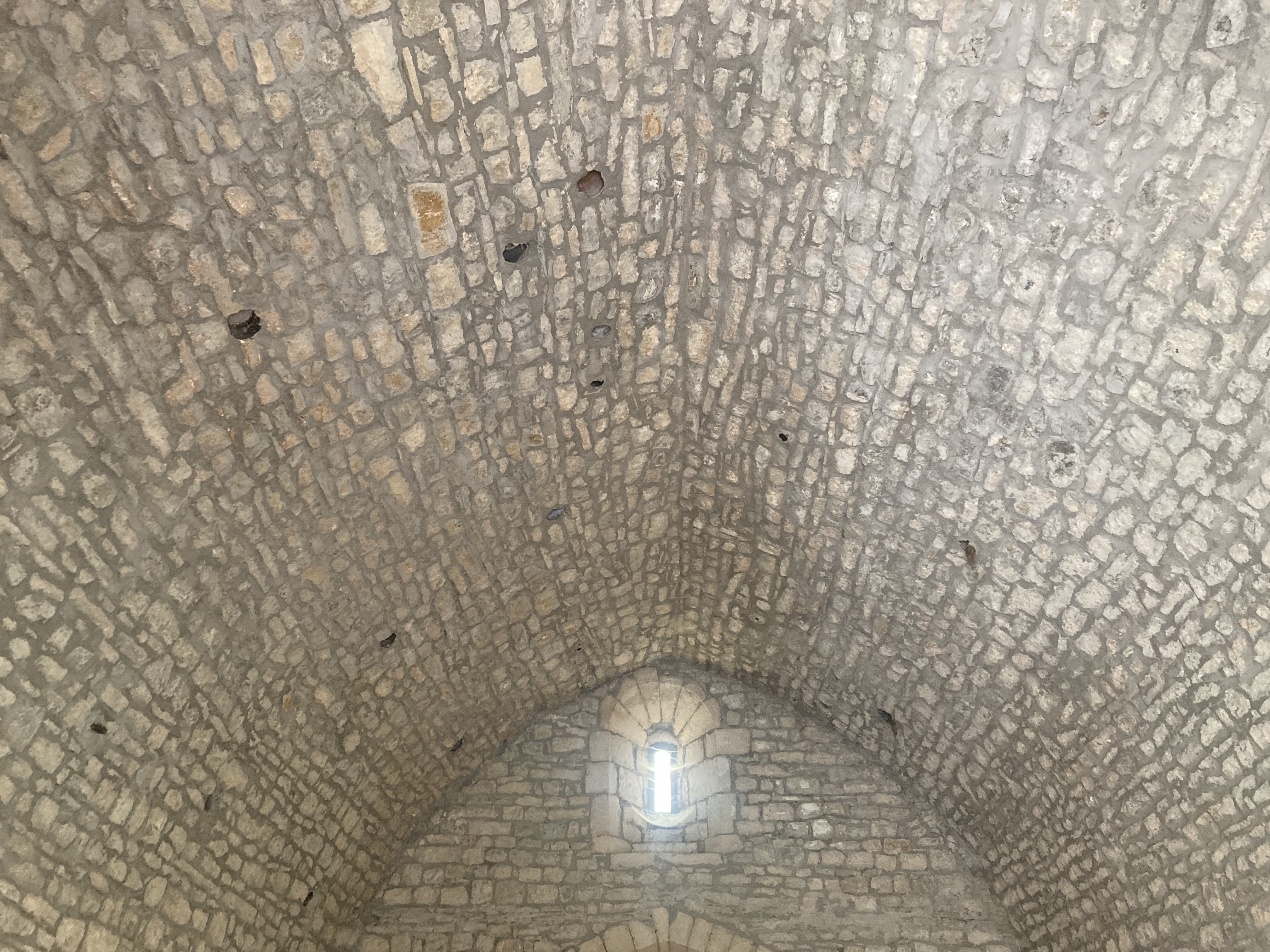
Twenty four ceramic jugs are cemented into the arched limestone ceiling. With their circular mouths directed outward, they look like little planets or stars, speckled across the vaults. At the time of the chapel’s construction, vaults in European churches became a popular place to paint night skies.

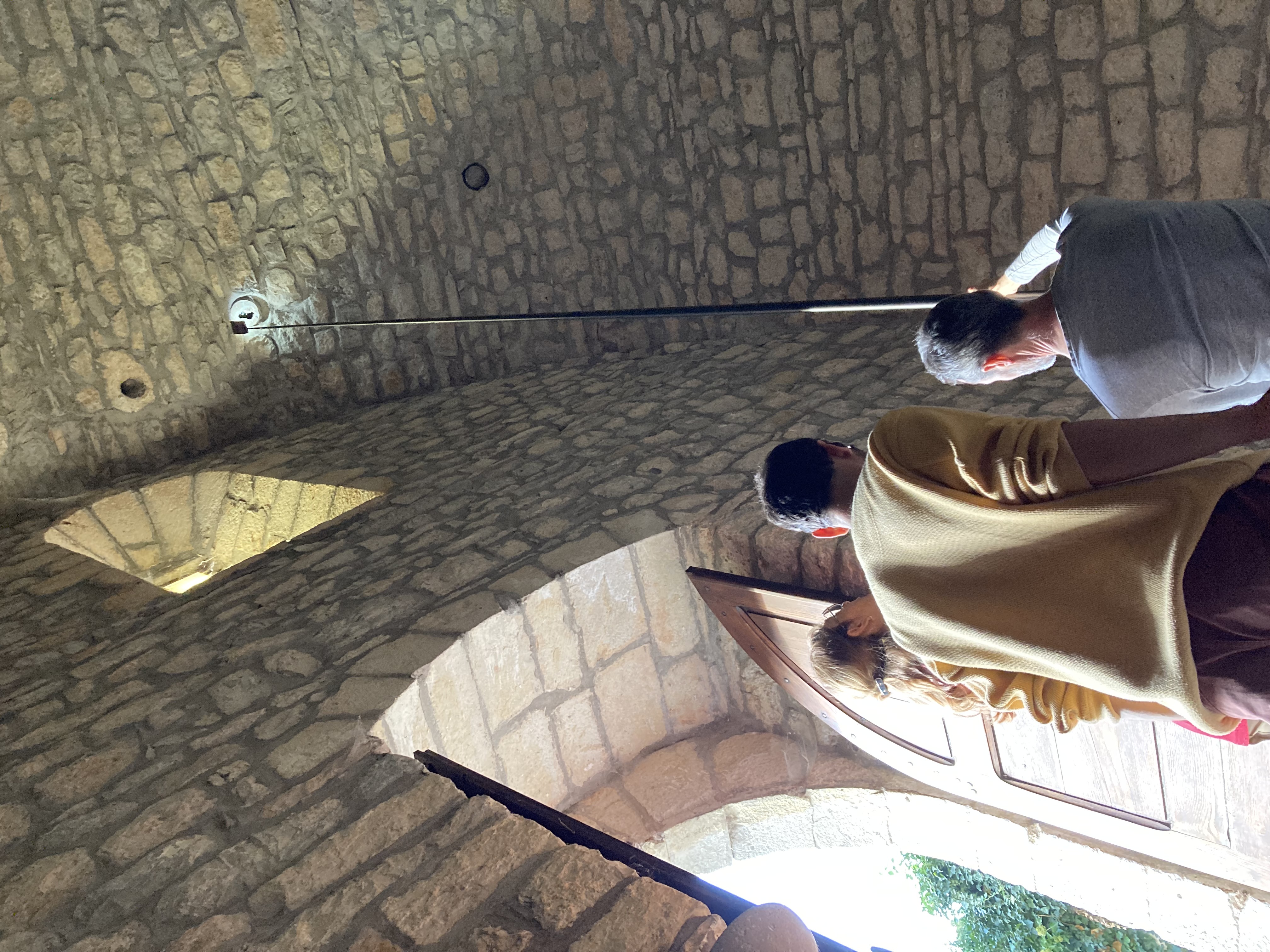
This acoustic spectacle may have also had a programmatic function, to give rise to a disembodied chorus, hovering in the vaults, evoking the presence of angels, who were believed to manifest and ceaselessly sing during the sung liturgy.
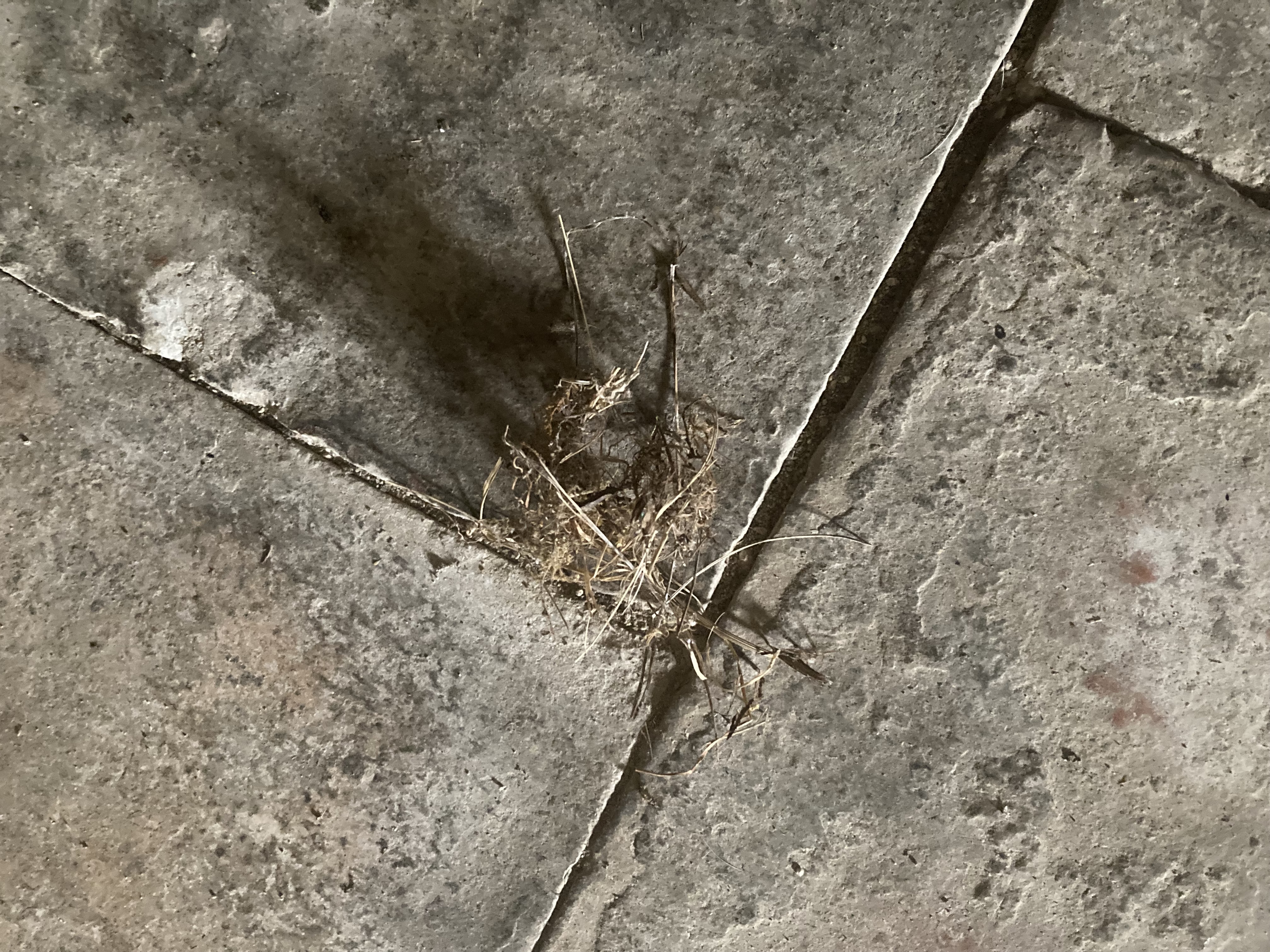
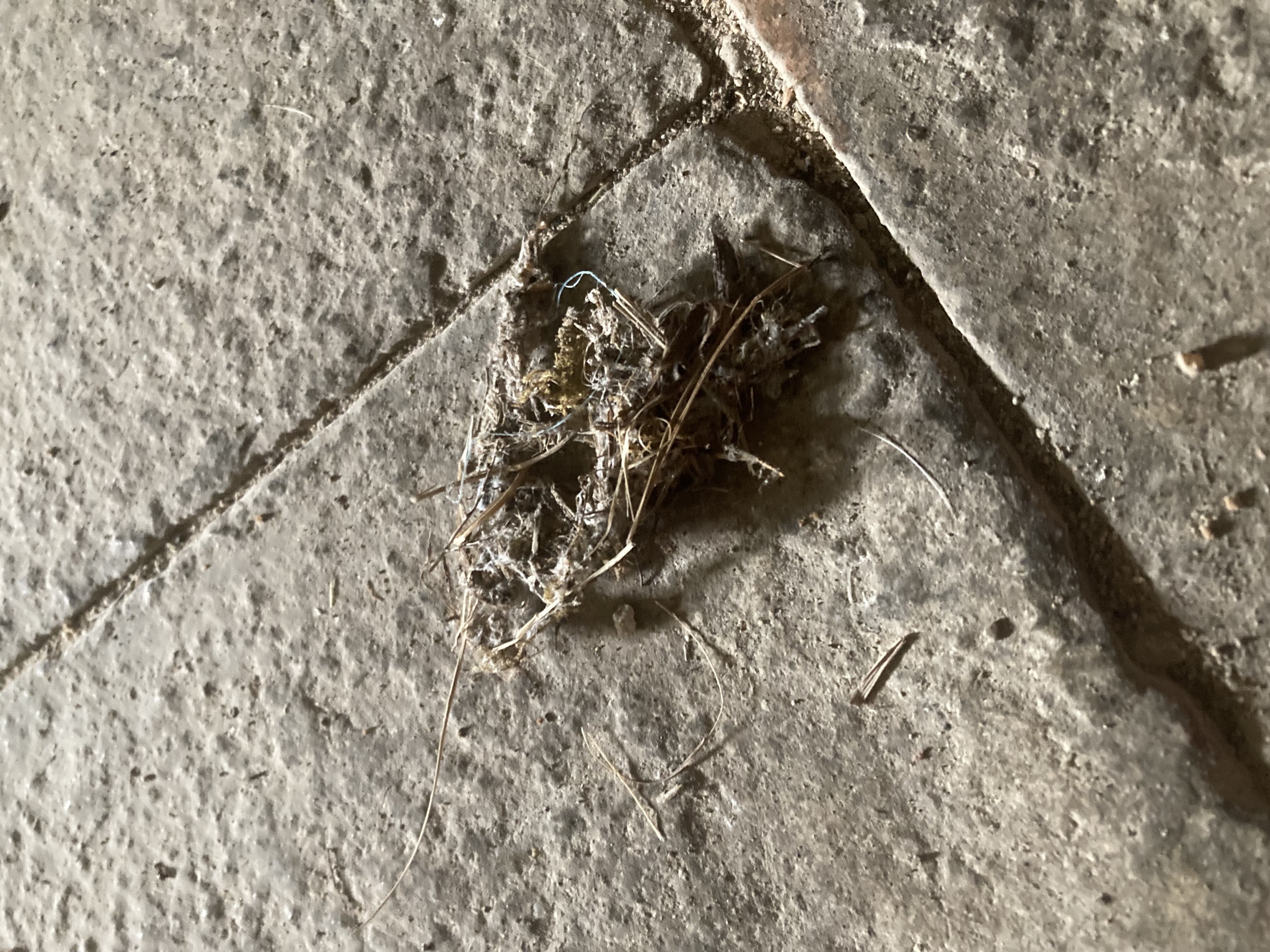
[*Bénédicte Bertholon told me that in the 18th century it was fashionable to remove the plaster from medieval buildings and expose the stonework underlying their construction. In doing so, much was lost and damaged, including ceramic resonators like the ones in Chapelle Saint Blaise.]

Nonetheless, the three researchers hoisted fishing poles with tiny cameras and microphones into the openings to measure and document what they could. I struggle with abstract ways of engaging with sound, so when spectrograms, waveforms, and spreadsheets appeared, my attention drifted elsewhere...
.
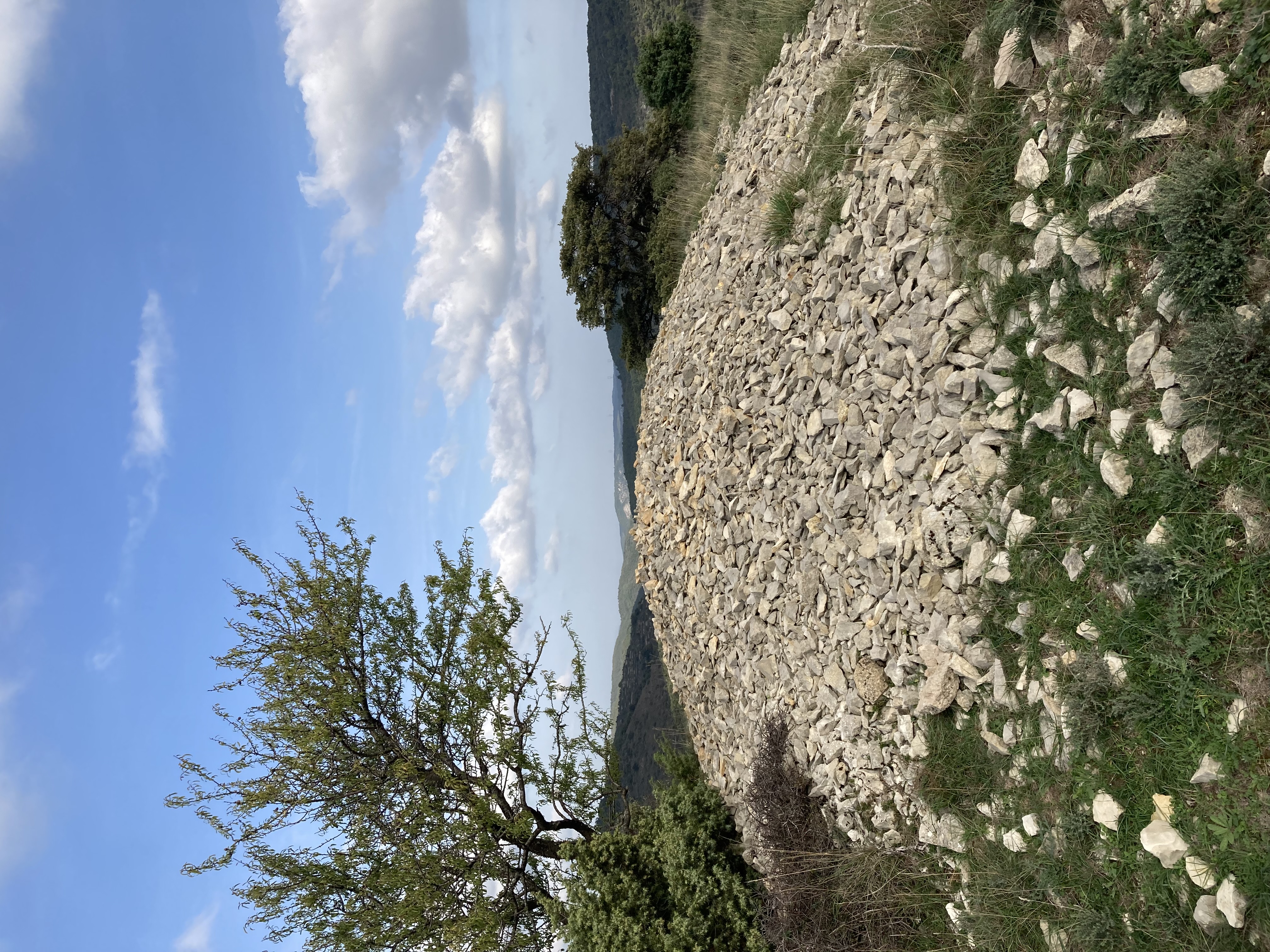
...to mysterious piles of rocks...
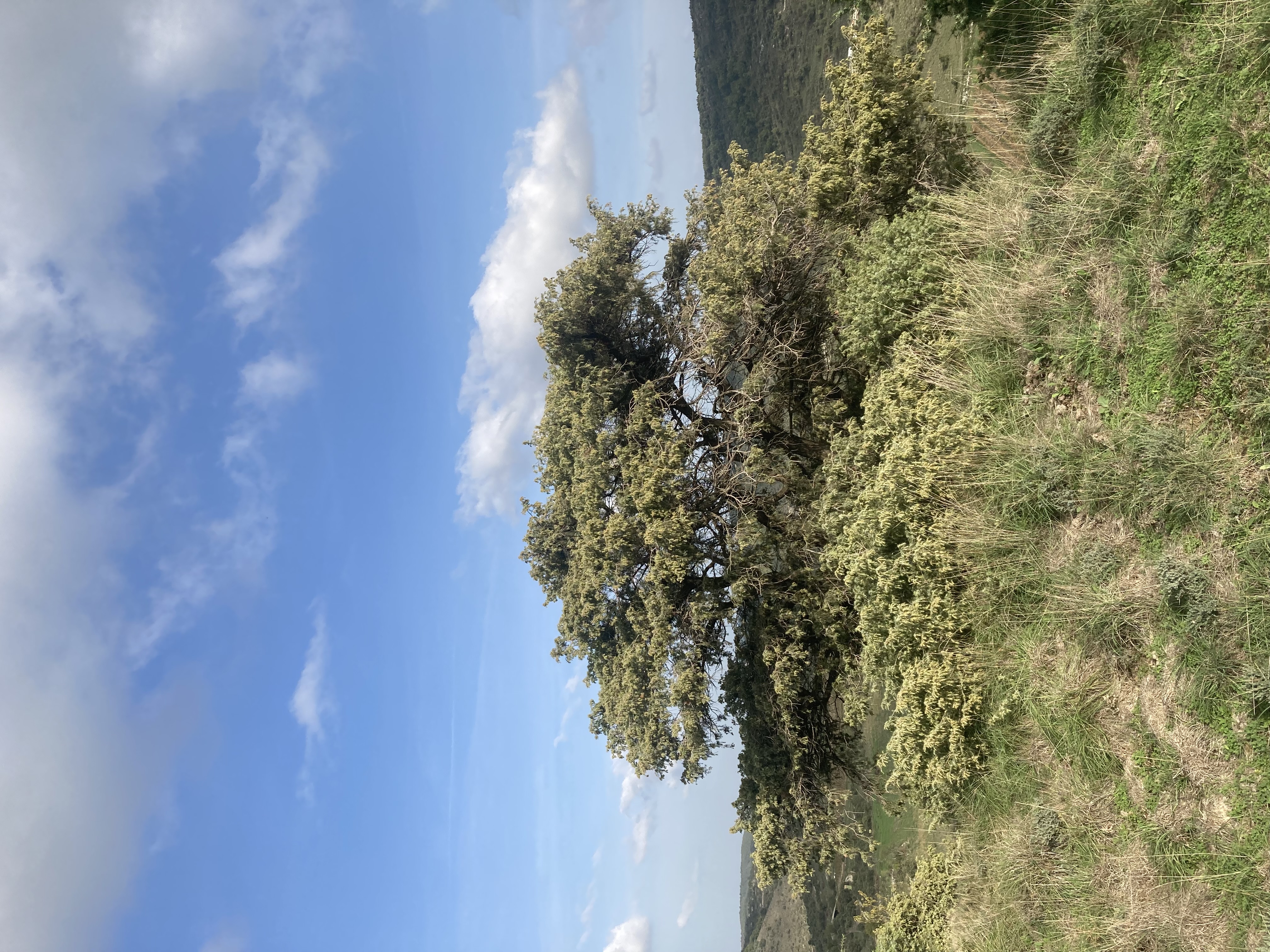
...to the forms of trees...
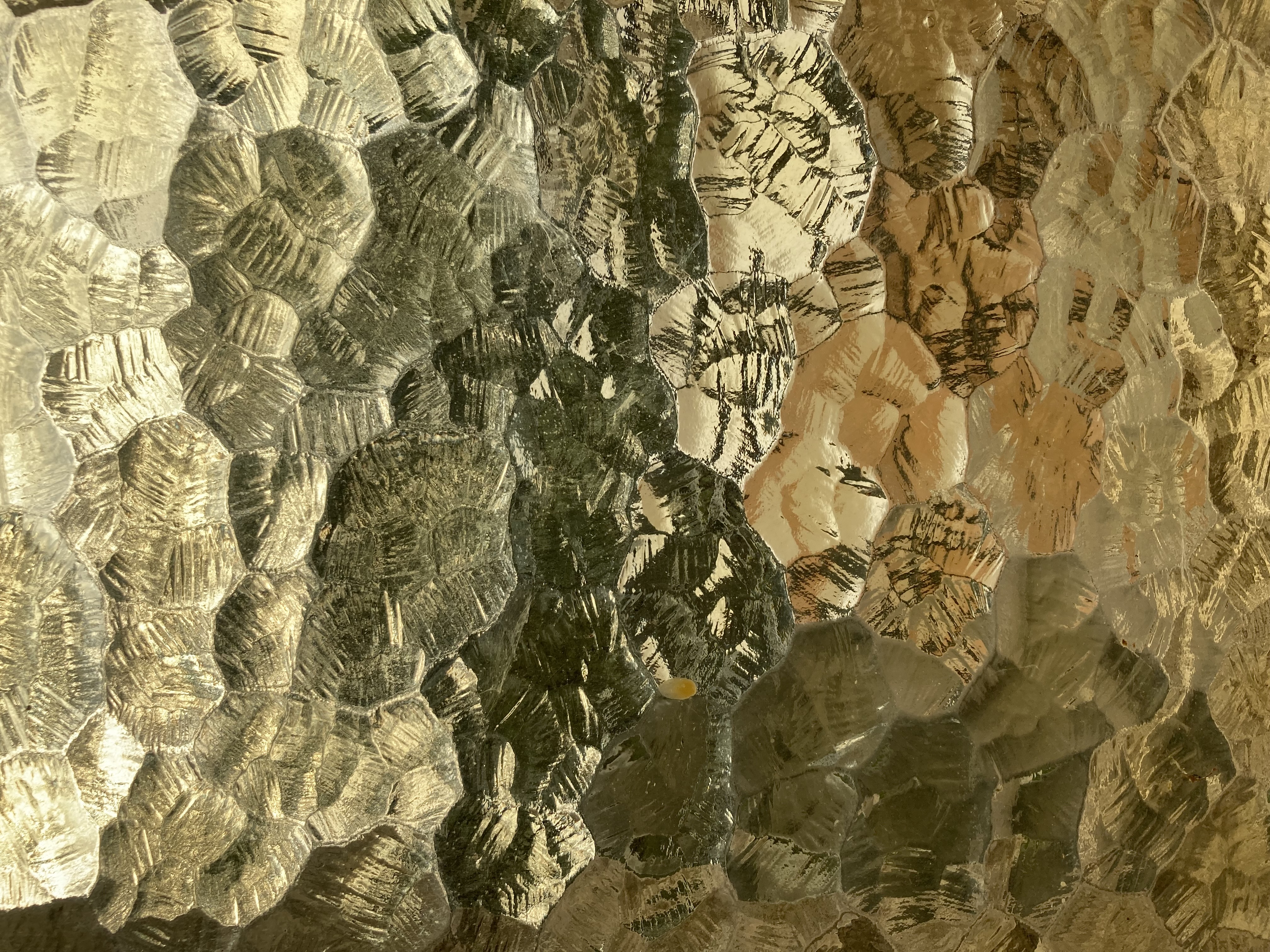
...to light formations in stained glass...
“My attention veered inexorably back to the specific, to the tangible, to what was generally considered, by everyone I knew then and for that matter have known since, the peripheral.” - Joan Didion, Why I Write
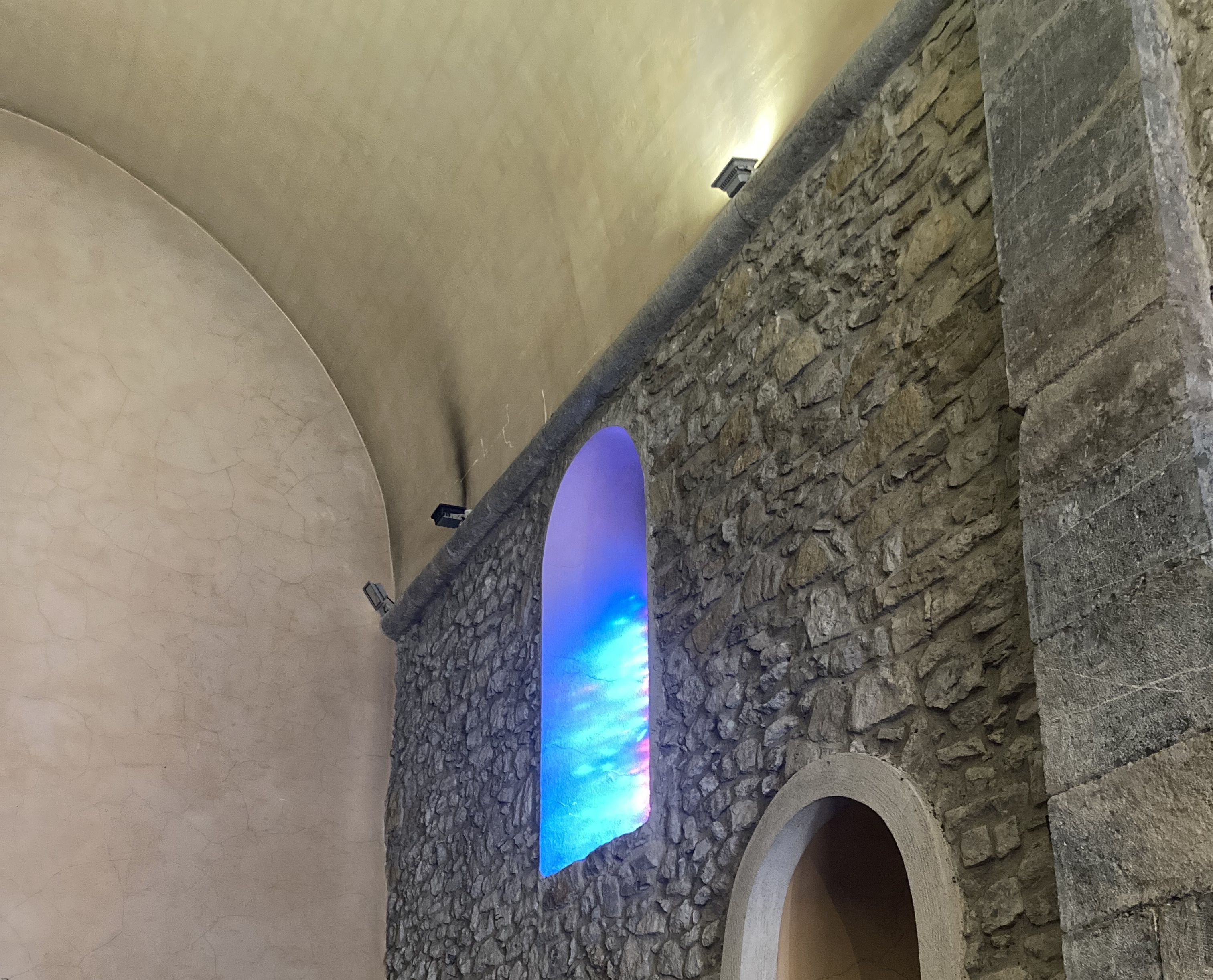
I visited a number of churches that fall, but my research did not amount to much, just some pathetic drawings and trivial data. Unable to engage with my subject in a material and sonorous way, I felt lost. What I engaged with instead was what was sounding in these churches. I began to document the sounds on the margins—murmuring clergy members, an organ being tuned, feet shuffling across pocked ground—as well as the forms and expressions of the liturgical music I heard along the way.

These impressions and artifacts from my time in the south of France coalesced into an album of music called “The Archivists”; it’s a patchwork of field recordings from my visits to churches and music I was recording in my studio at the time.
“Just like every collection, this one is a diary as well: a diary of travels, of course, but also of feelings, states of mind, moods… Or perhaps it is only a record of that obscure mania which urges us as much to put together a collection as to keep a diary, in other words the need to transform the flow of one’s own existence into a series of objects saved from dispersal, or into a series of written lines abstracted and crystallized from the continuous flux of thought.” - Italo Calvino, Collection of Sand
I set out again to find a way to engage with ceramic resonators from the Middle Ages, but this time in Rome. Like most activities in Rome, this entails walking. Walking is orbital. Departures on foot demand a return. Walks are very generative recursions; they open literal and cognitive pathways.
On these walks to medieval churches, I would pass by other churches and found myself walking into any with their doors open. What I discovered were ecclesiastical sites that were, by and large, nauseatingly garish and overwrought, but if seen a certain way, at the right moment, were sublime…
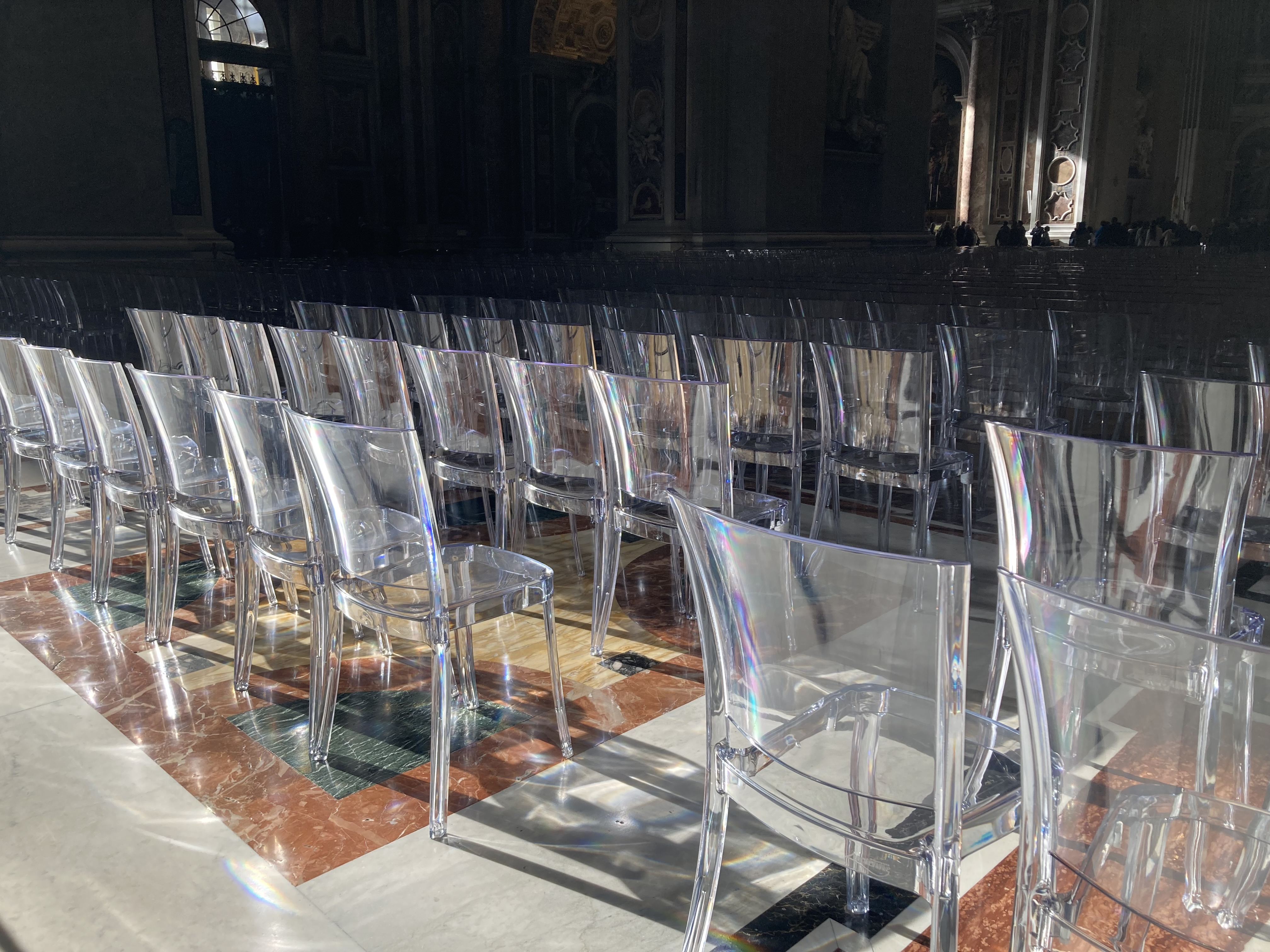
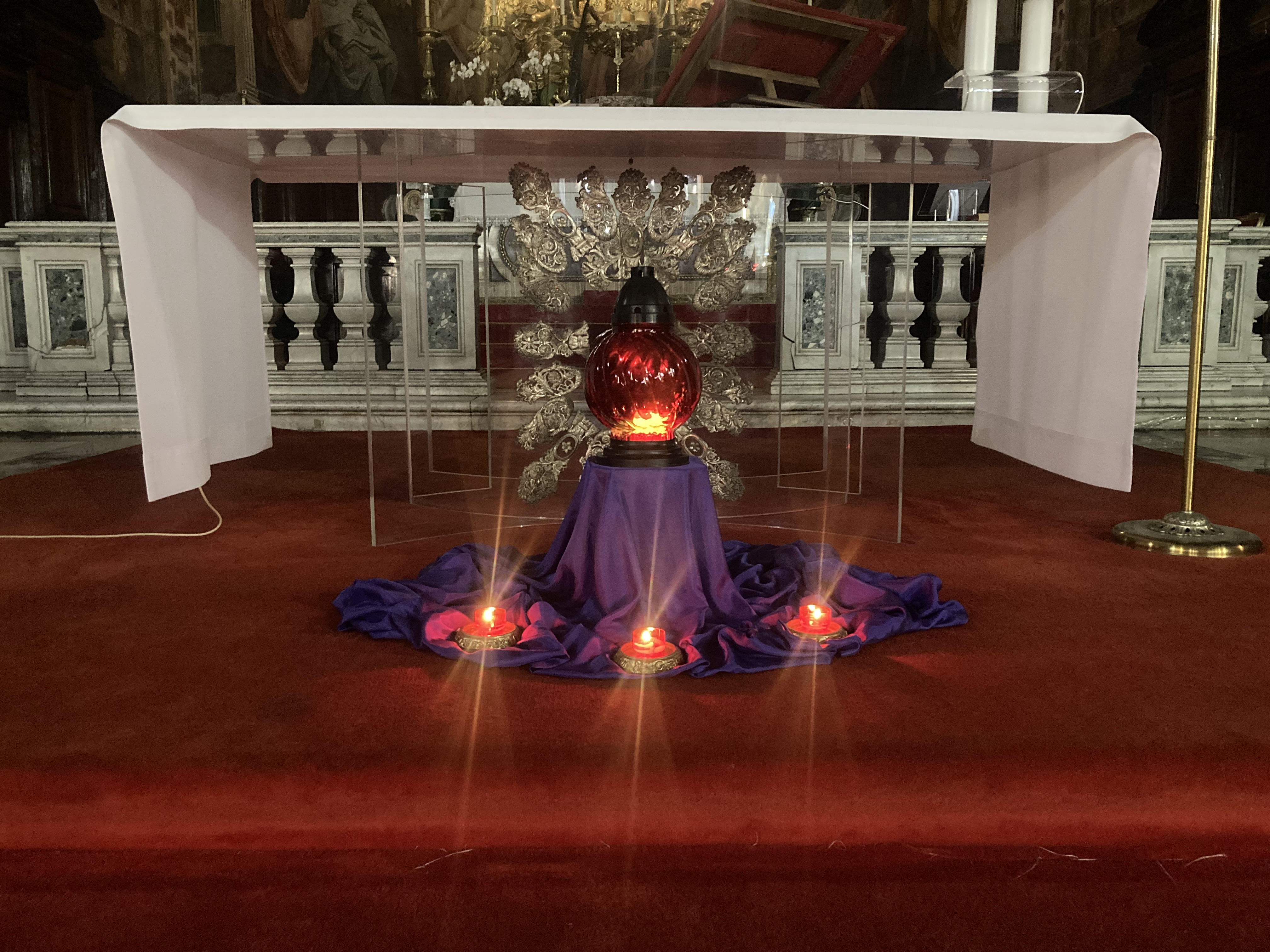
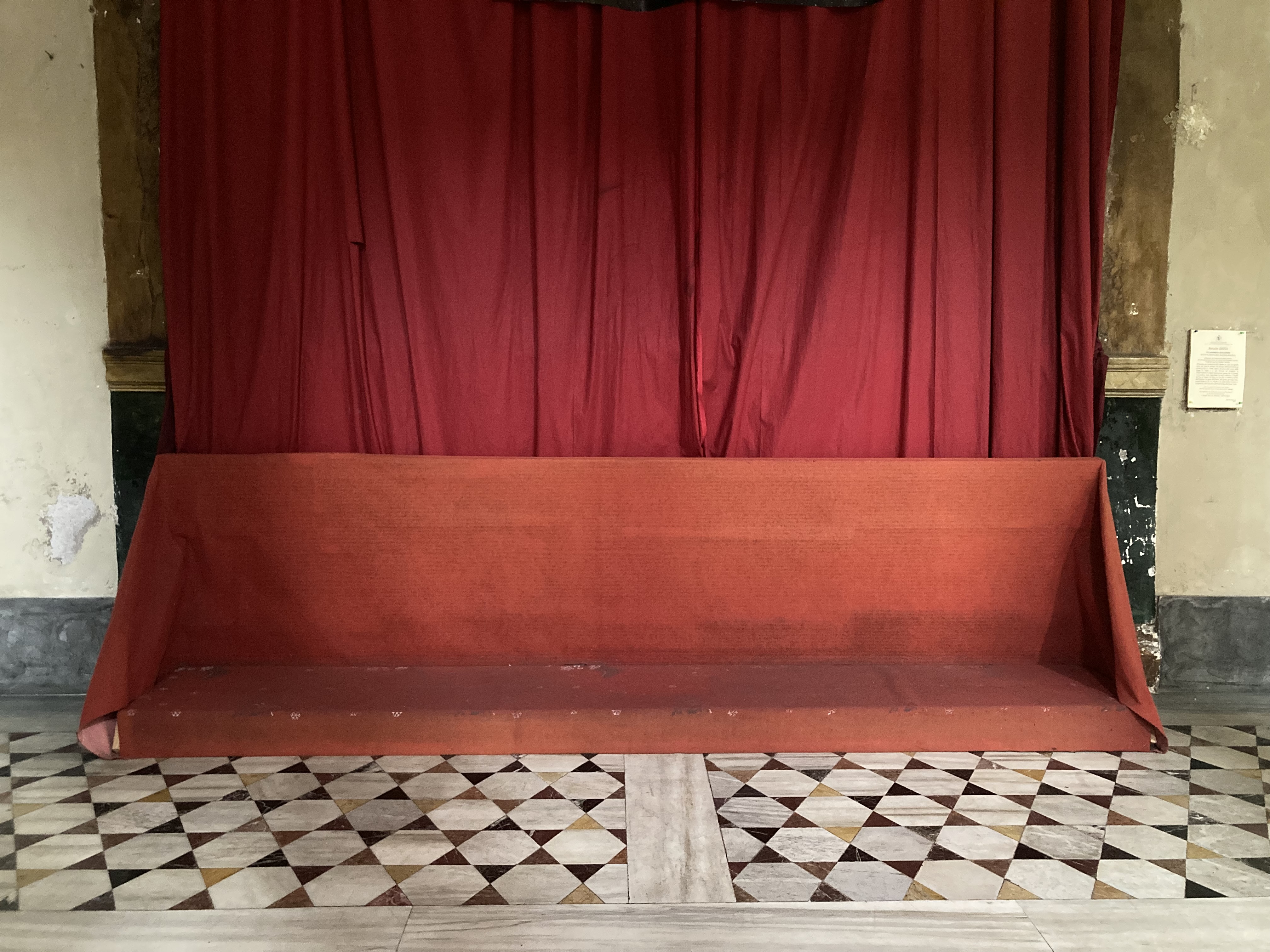
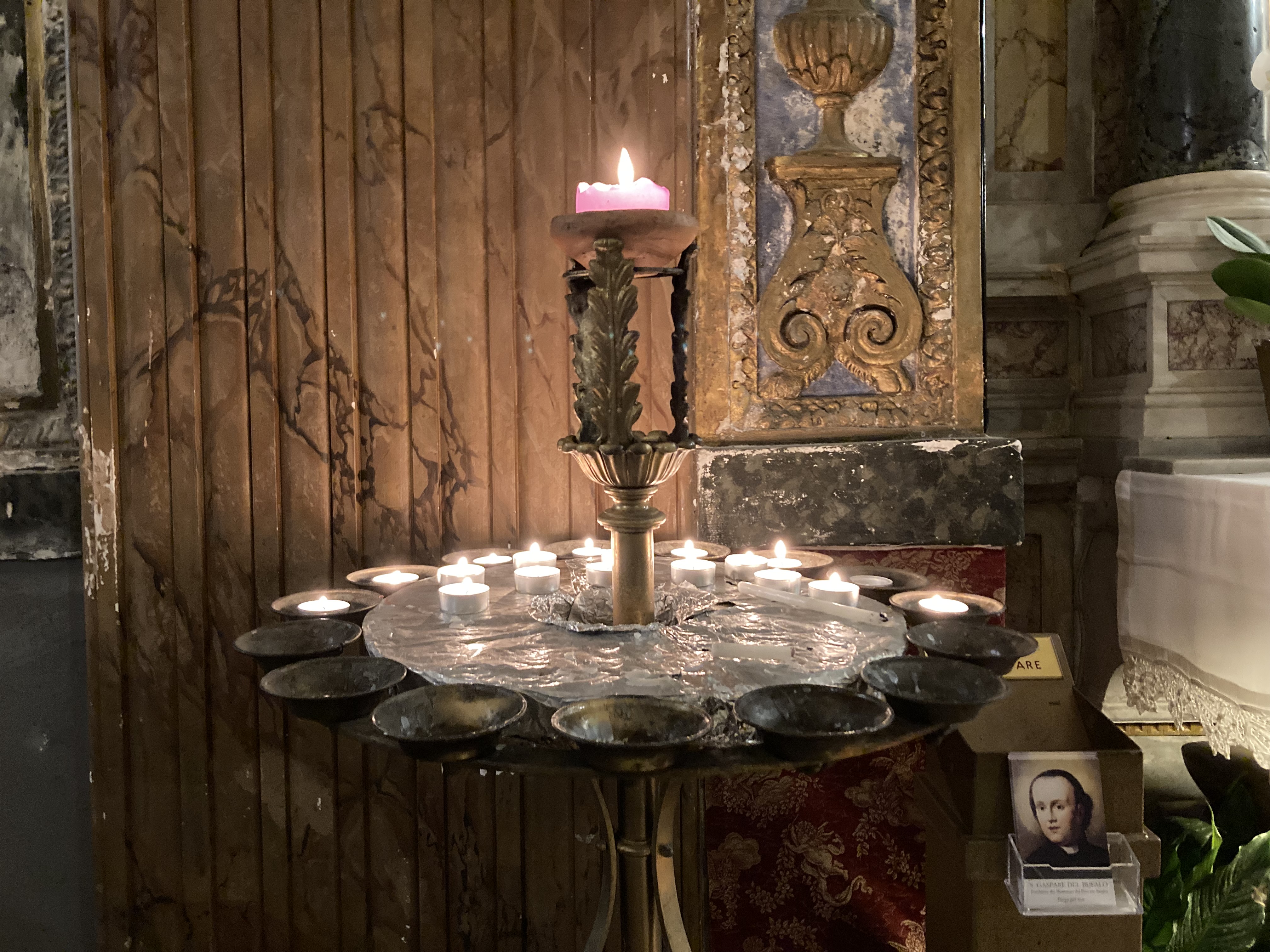 [more images are hosted here: https://www.are.na/anthony-vine/churches-in-rome]
[more images are hosted here: https://www.are.na/anthony-vine/churches-in-rome]
In one of these churches, I also started to notice music playing softly from white cylindrical speakers mounted on marble pillars. The music was an arrangement of liturgical chant. But instead of being sung, the chant line was played on flute, accompanied by a delicately strummed harp, and wrapped in a velvety synth pad, accentuating the candle lit mystique of the church.
The primary aim of the music, it seemed, was to calm and comfort.
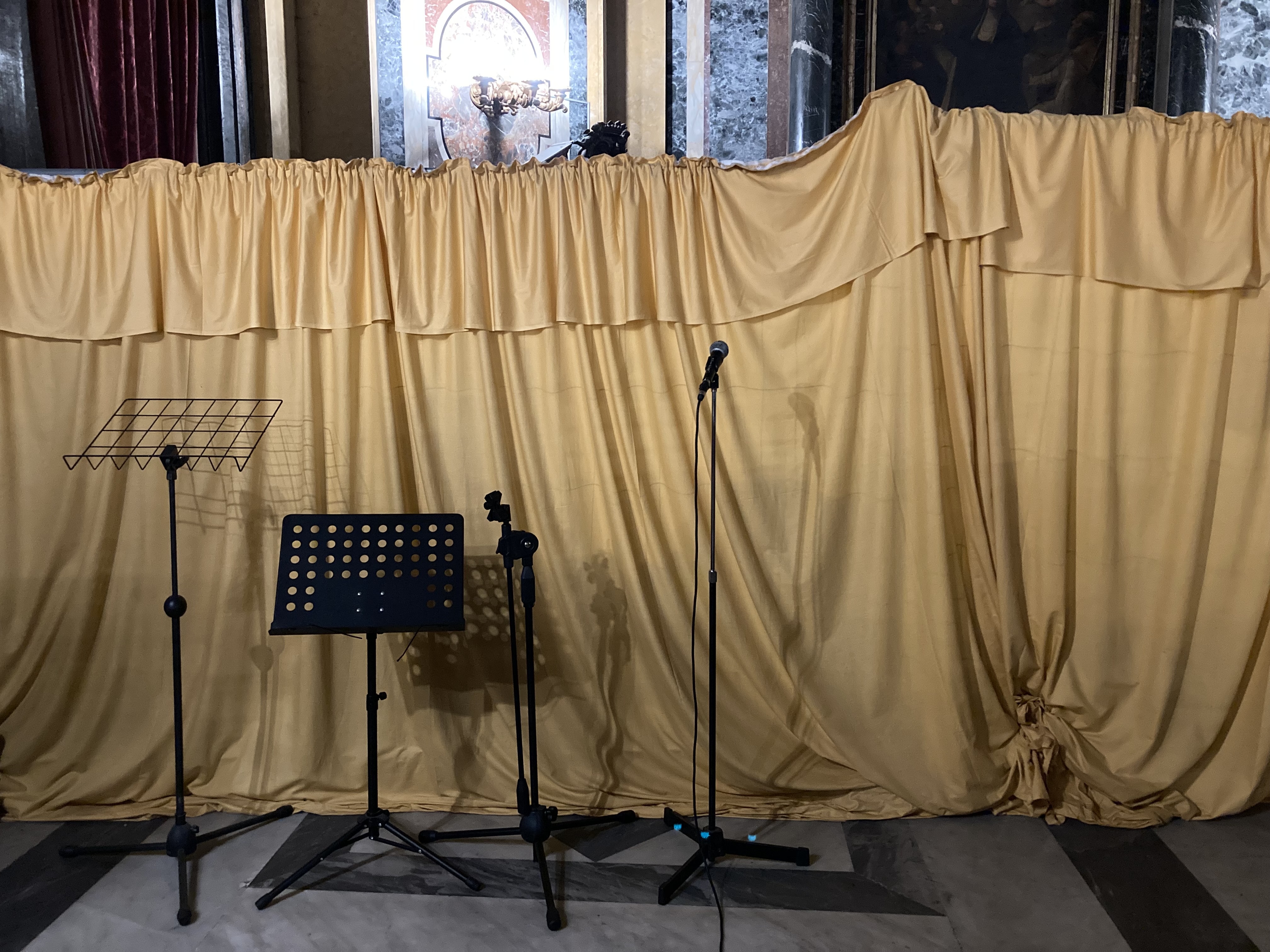
Barely audible sacred sounds blanketed the austere emptiness of the church with an easygoing sheen, giving those who came to pray or look around the illusory feeling that someone or something was there.
Wistful and tender, stripped of voice and sacred texts, the background music seemed to symbolize a lost sonorous past. The modern packaging of digital keyboards and computer sounds, and New Age expressions bridged the distant devotional past with our present. This sonorous world of reverent worship was synthetic and idealized yet rooted in something real. These looped recordings of gentle music echoed a time when the Liturgy of the Hours was incanted day and night, a time when churches sounded ceaselessly.
The background music of the church also seemed to point to the future. The music was like an underpainting, a grisaille of wordless and voiceless melodic contours that would be "filled in" during the services to come. Background music helps us with waiting for the future, in elevators, grocery store queues, and here, for the liturgy, which in the Middle Ages was thought to be a moment of God’s literal arrival.
Wistful and tender, stripped of voice and sacred texts, the background music seemed to symbolize a lost sonorous past. The modern packaging of digital keyboards and computer sounds, and New Age expressions bridged the distant devotional past with our present. This sonorous world of reverent worship was synthetic and idealized yet rooted in something real. These looped recordings of gentle music echoed a time when the Liturgy of the Hours was incanted day and night, a time when churches sounded ceaselessly.
The background music of the church also seemed to point to the future. The music was like an underpainting, a grisaille of wordless and voiceless melodic contours that would be "filled in" during the services to come. Background music helps us with waiting for the future, in elevators, grocery store queues, and here, for the liturgy, which in the Middle Ages was thought to be a moment of God’s literal arrival.
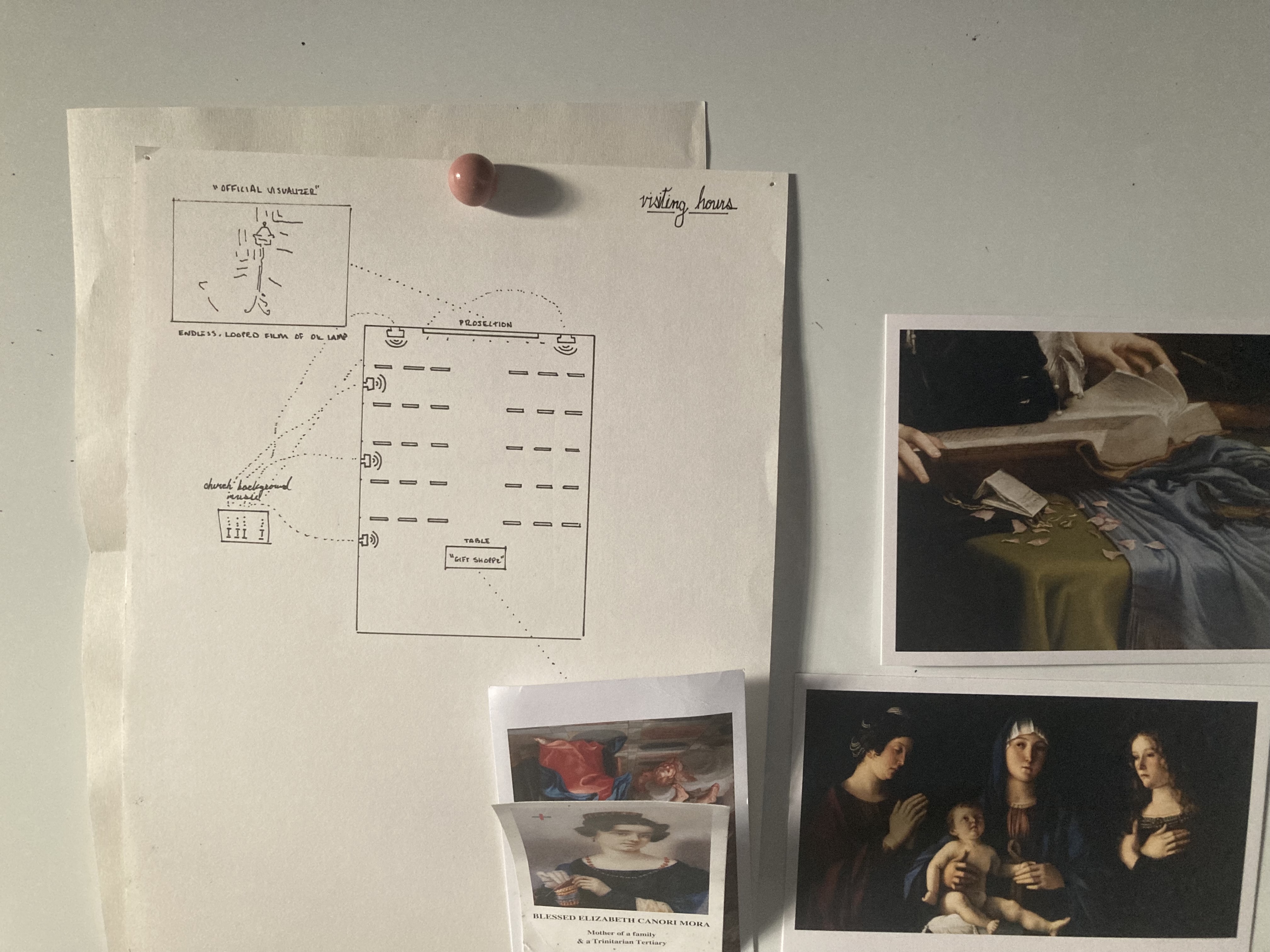
Due to the colorful and vivid resonance of these large vaulted churches, each field recording carries a very strong imprint of the church’s spatial volume and activity. So much so, the recordings seem to transpose the very space where you are listening into the space emanating through the speakers.
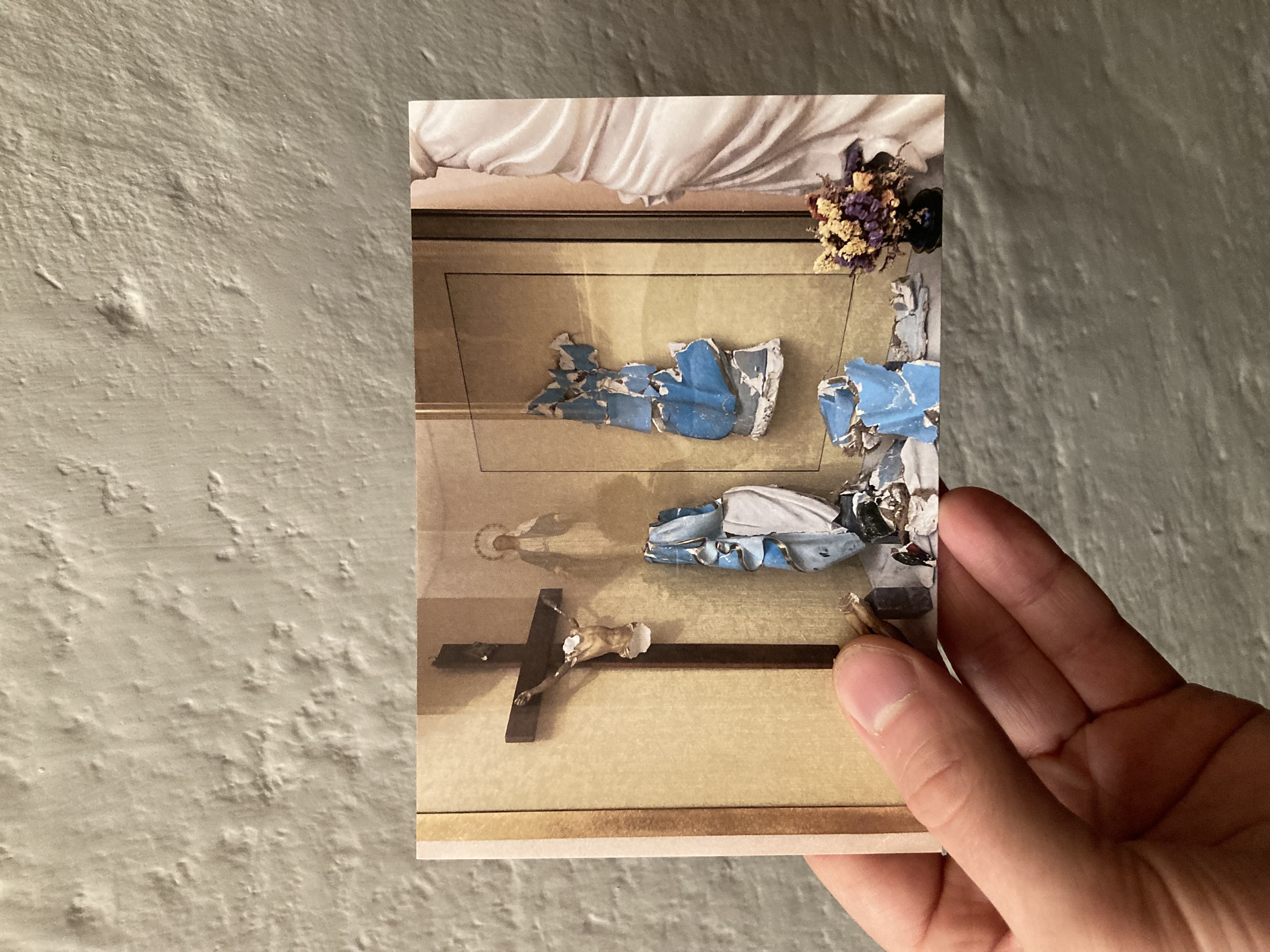

[*The pamphlet can be viewed here.]
Recently, images of churches have served as portals of inspiration for projects.

At the moment, I am composing a piece of music for violinist Maya Bennardo and pianist Karl Larson called “Worshipful Company,” which takes photographs of ancient Swedish churches with elaborate painted murals as its starting point. My music, for quite a while now, has always engaged with physical and material aspects of spaces. But now I am also using the atmospheres invoked by images of spaces, distant in time and place, as a presence to respond to. When I look at them, I try to imagine an ancient liturgical music that I wish would have sounded in these spaces and go from there. The result, thus far, has been a book of short “wordless” chorales.
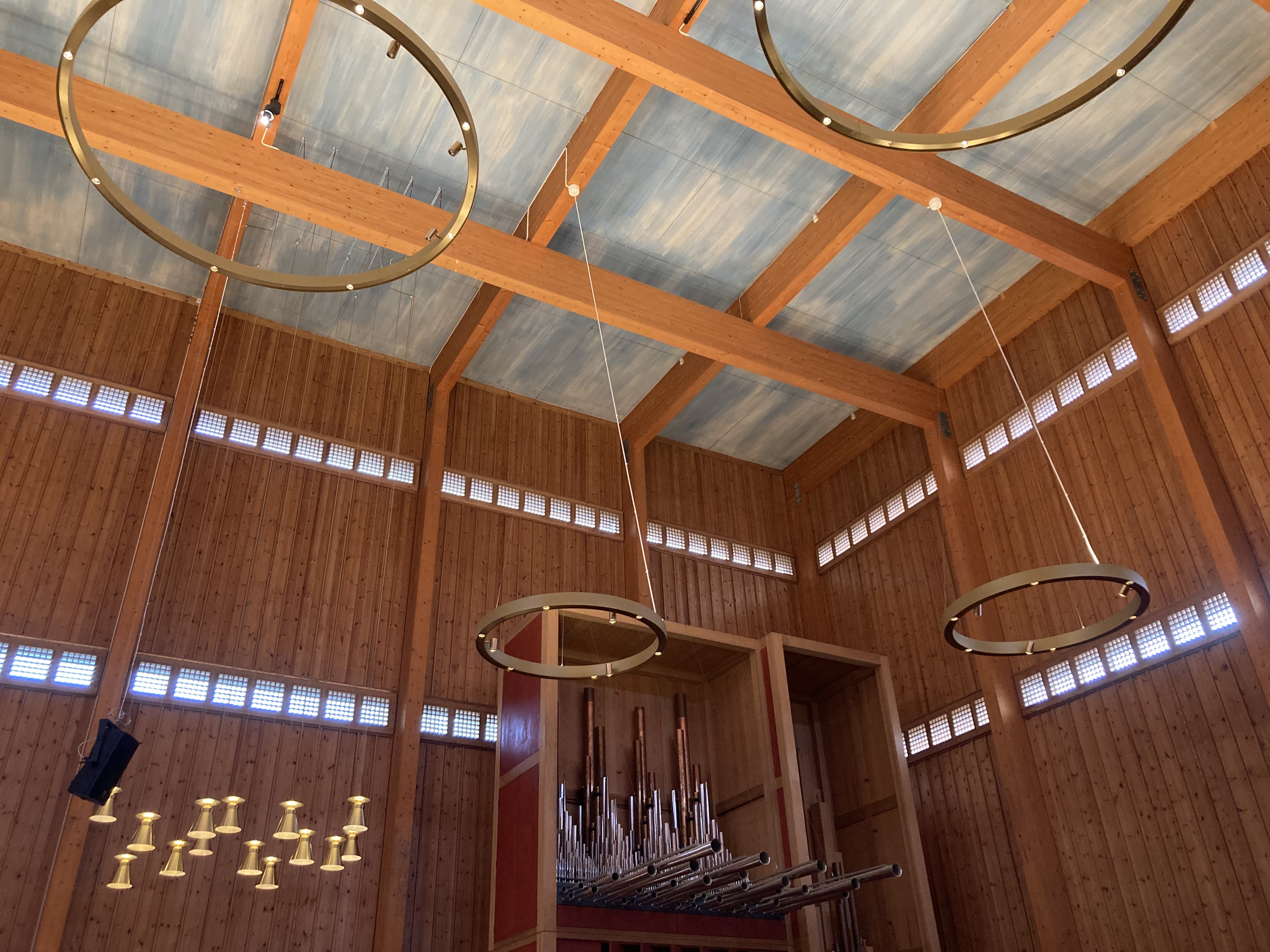
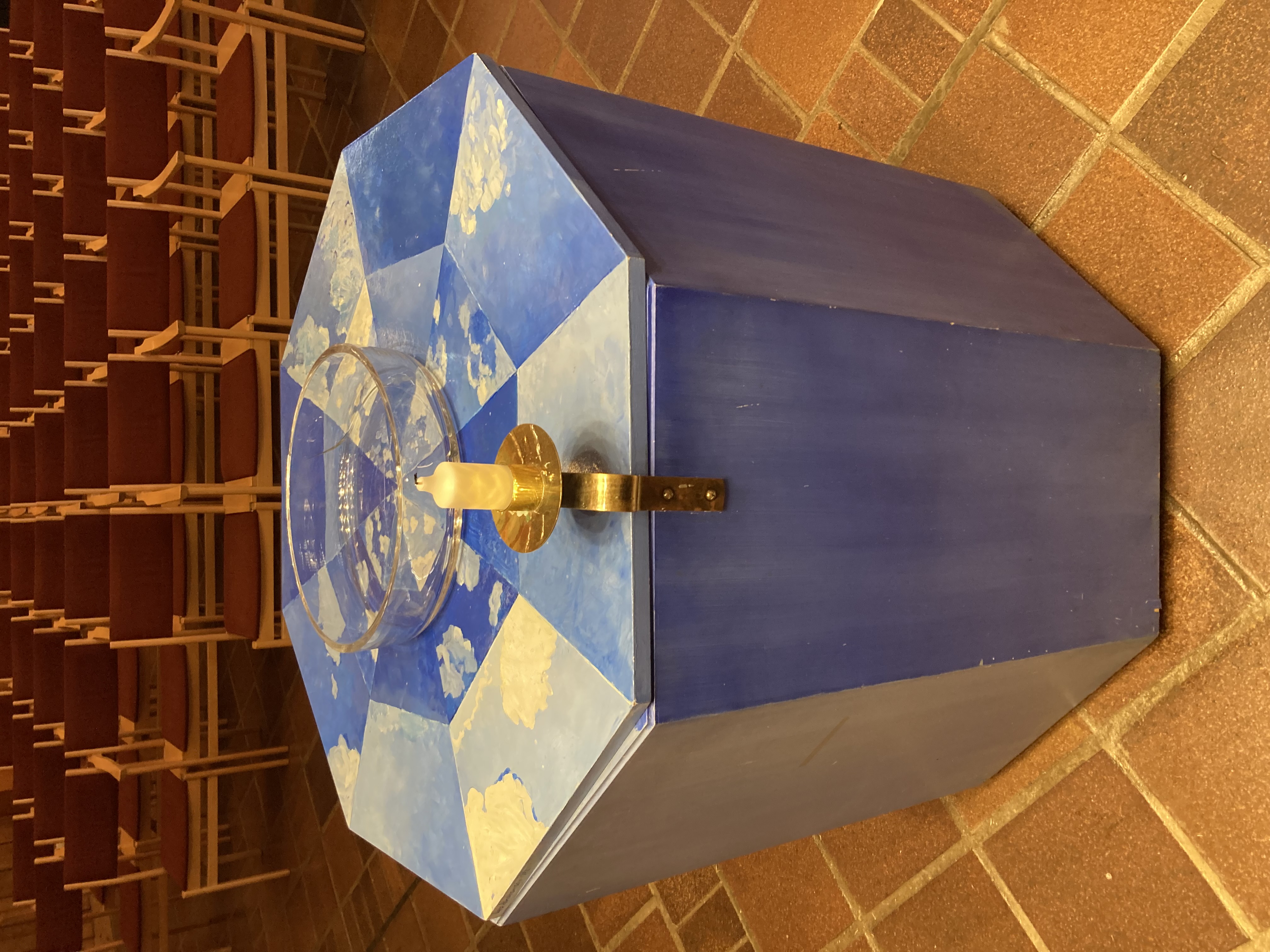
Chorales are elemental. They are formed from a single melody, traditionally taken from a hymn or song, and supported by other voices which all move uniformly together. Due to their simple and rudimentary design, chorales are often used as pedagogical tools for young students to study part writing, harmony, and form. But the chorales written by Bach and other composers of the past were not conceived as exercises, but rather to communicate biblical texts, like psalms, in vernacular settings that were simple enough for large congregations of amateur musicians to sing. Chorales interest me because they are functional yet deeply aesthetic. They have what the potter and writer Alison Britton might call a “double presence.”
The expression of "Worshipful Company” ranges from the solemnity of ancient liturgical music to the sentimentality of modern Catholic hymns to the innocence of music theory homework. Like the first chorales written by Martin Luther, they are structurally simple and immediate in expression. But they are without words, and not sung but rather bowed and hammered. Why this music for violin and piano registers as "sung" is a reminder that the voice is the substance of so many things.
The expression of "Worshipful Company” ranges from the solemnity of ancient liturgical music to the sentimentality of modern Catholic hymns to the innocence of music theory homework. Like the first chorales written by Martin Luther, they are structurally simple and immediate in expression. But they are without words, and not sung but rather bowed and hammered. Why this music for violin and piano registers as "sung" is a reminder that the voice is the substance of so many things.
Saints have a double presence too. They are human and divine.

Last year, I composed a “hagiographic concerto” for electric guitar, clarinet, and orchestra based on the story of St. Bazetta, a saint of my own making, named after the township in Ohio where I grew up. I invite you to read St. Bazetta’s story while you listen...
There is a place called Bazetta. The etymological origin of its name is unknown. Bazetta is unremarkable in terms of its topography—tracts of uncultivated land adjoin with manicured lawns and linoleum-sided split level homes—yet it has an undeniable mystical presence: “a land for seeking esoteric spiritual truths,” as one hagiographer notes. Eremites came there instinctually, following an “ultra-thin allure,” and lived in the chestnut trees. Concealed by foliage, the eremites could only be heard praying. Their devotions were always sung, like angelic choirs who are believed to sing eternally in the presence of God. As the early music practitioner Christopher Page notes, the devotional singing of the eremites and their contemporaries was “not the self-conscious and extroverted activity that we [today] associate with performing.” They sang to more fully embody the spiritual meanings of their recitations, litanies, and testimonies. But that is not to say their intonations were not carefully tended to, nor deeply aesthetic. “Potent devotion beckons sonorous ecstasy.”
Hagiographic texts tell of a prodigious eremite from the forests of Bazetta whose voice “could still the sublunary world.” Walking aimlessly through the groves of chestnut trees one night, a prelate of the area, who had been afflicted by an inexplicable, generalized uneasiness for many years, suddenly felt a peculiar humming course through him. “I heard a tone like that of roaring waters… of a seraphim’s wings,” he recounted, “and awoke the next morning in the duff and detritus cured of my malaise.” The healing of the prelate was the first of many miracles attributed to the hermit, who was canonized and given the toponymic name St. Bazetta.
“The Song of St. Bazetta” is a fantastical reimagining of the devotional singing of St. Bazetta and the eremites of the region. The musicians sound with one voice, ceaselessly, in alternating choirs. They dwell upon the natural resonances of their instruments, following the slow undulation of a liturgical tenor. Without words and adornments, all that remains in this song is the voice, vox prius facta (“the voice first made”), the sounds that form our every utterance.
This talk was given at the American Academy in Rome on December 4, 2023 as part of the 2023-24 Fellow Shoptalks series, alongside architect Ajay Manthripragada. The two of us also presented a prototype of a collaborative project, ‘terrasong,’ a sound sculpture consisting of clay vessels and microphone feedback.